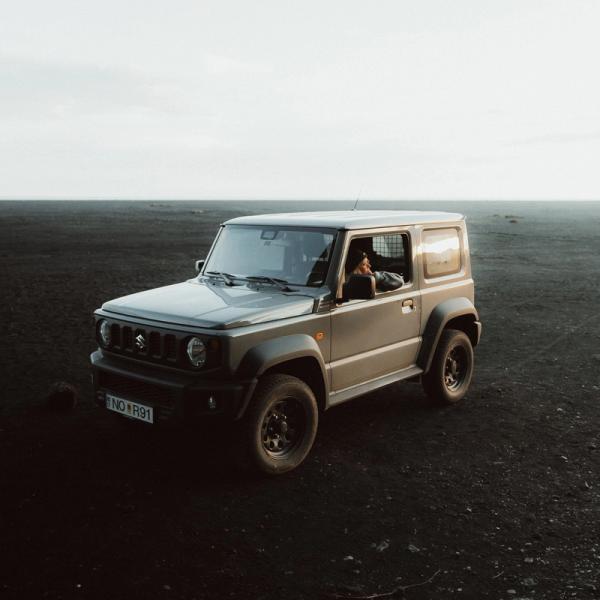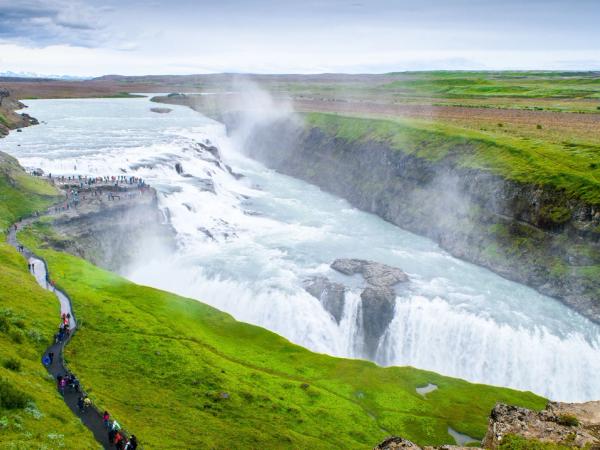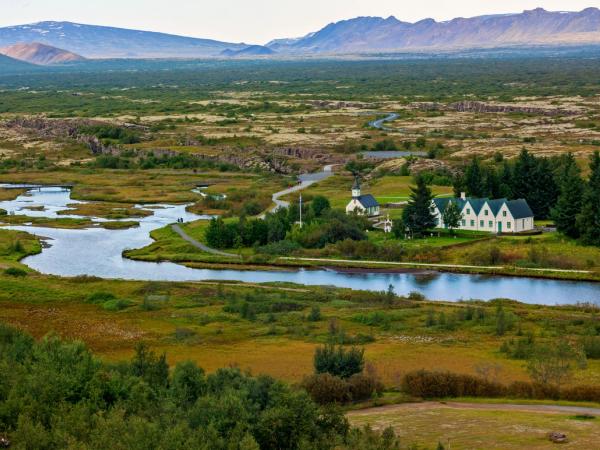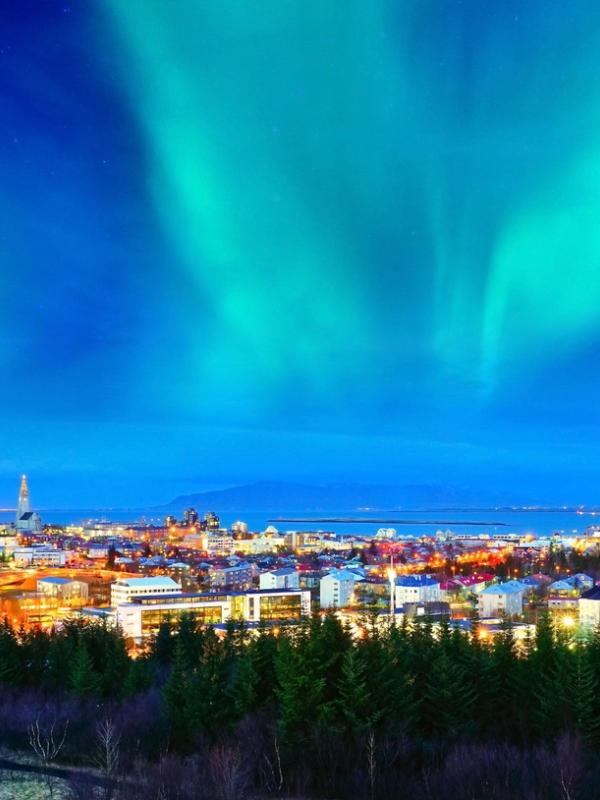
What to expect: Weather in Iceland in November
The climate can play a crucial role in our trip, and we usually prepare our visit and suitcase bearing that in mind. In the case of Iceland, even more so, as it’s full of amazing natural treasures, and many of the activities to be done here happen outdoors.
Every season in Iceland has its own charm and positive points. However, the island’s weather, particularly in November, can be challenging and unpredictable. As Iceland transitions from autumn to winter, the days grow shorter, the nights longer, and the weather can be more unstable. Understanding what to expect in terms of weather is crucial for planning a successful trip during this time of year.
This guide will give you the information you need about the weather in Iceland in November, from average temperatures and precipitation to daylight hours, regional variations, and travel tips, so you can enjoy a safe and unforgettable journey.
Key Takeaways
- Average temperatures range from 0°C to 4°C, with colder conditions, especially in northern and inland areas.
- November is a wet month with frequent rain and snow, particularly in coastal regions.
- Daylight: Daylight reduces to 4-5 hours by the end of November, requiring careful planning for outdoor activities
- Regional Variation: The south and Reykjavik area are milder and wetter, the north and Highlands are colder with more snow, the East Fjords face harsh winter conditions, and the Westfjords are cold and snowy with frequent road closures.
What is the Average Temperature in November in Iceland?
November is Iceland's first month of winter. This month comes with a significant drop in temperature, which typically ranges between 0°C (32°F) and 4°C (39°F), though this can change depending on the different parts of the country. Coastal areas, such as Reykjavik, tend to have milder temperatures due to the moderating influence of the North Atlantic Ocean. However, these regions tend to be wetter and windier, and the feeling can be of a lower temperature.
In more remote areas, such as the Central Highlands and northern regions, temperatures can drop below freezing more consistently, often reaching -5°C (23°F) or lower, especially at night. Wind chill can also make it feel much colder, particularly in exposed areas. With the passing of weeks, frost and snow become more common.
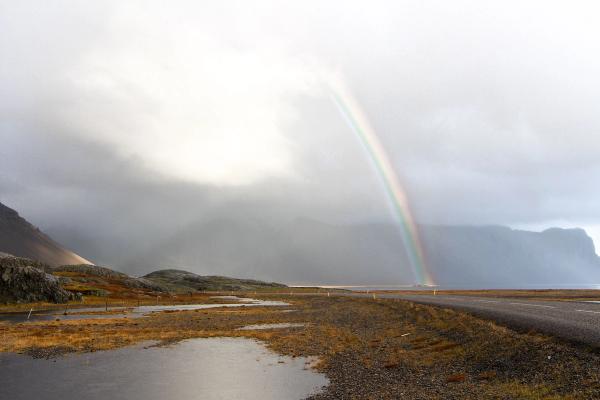
Variability of temperatures
It’s important to know that the weather in Iceland changes constantly. You might experience a relatively mild day followed by a sudden cold drop in temperature or a snowstorm. This unpredictability is part of what makes Iceland’s weather unique and requires travelers to be well-prepared for it.
How much does it rain in November in Iceland?
November is one of the wettest months in Iceland, with frequent precipitation in the form of rain and snow. The amount of rainfall can vary depending on the region, with coastal areas typically receiving more precipitation than inland areas. The average number of days in November is around 12.
The rain can often turn to snow, especially as temperatures drop towards the end of the month.
Snow and winter conditions
As we were saying, snow becomes more frequent as November progresses, particularly in higher altitudes and northern areas. In some parts of Iceland, especially in the Highlands and East Fjords, snow can accumulate quickly, which can affect traveling through these regions. The snow transforms the country into a beautiful Christmas postcard but it might be dangerous to drive.
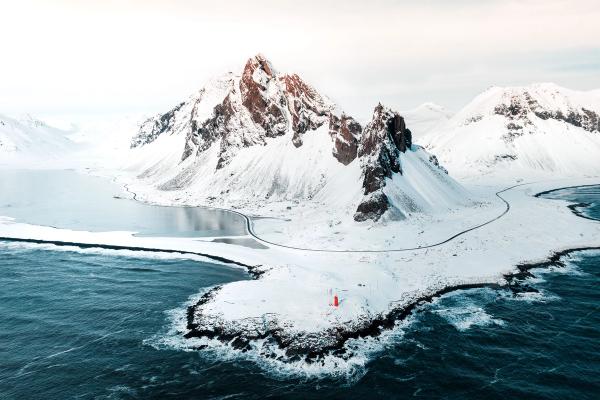
Daylight hours in November
One thing visitors will notice in Iceland during November is how daylight hours get shorter by the day. At the beginning of the month, you can expect about 7 to 8 hours of daylight. However, by the end of November, daylight hours shrink to just 4 to 5 hours per day.
In Reykjavik, sunrise occurs around 9:30 AM at the start of November, but by the end of the month, it’s closer to 10:30 AM. Sunset, which happens around 4:00 PM in early November, can occur as early as 3:30 PM by the month’s end. This limited daylight requires careful planning to make the most of your time, particularly if you want to explore the outdoors.
There’s a positive side to the extended hours of dark skies, as the long nights offer excellent opportunities for viewing the Northern Lights. Many travelers use daylight hours for sightseeing and outdoor activities while saving indoor activities like museum visits or enjoying local cuisine for the evening.
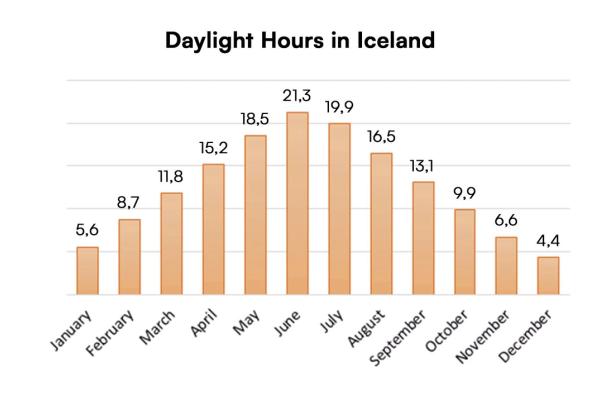
The Weather in Different Regions of Iceland in November
Despite being a relatively small country, the weather in Iceland varies greatly from one region to the other.
Reykjavik and the South Coast
Reykjavik and the southern coast of Iceland generally experience milder and wetter conditions compared to the rest of the country. In November, temperatures typically range from -1°C (30°F) to 4°C (39°F), and rain showers can be frequent, which can turn into snow as temperatures drop. The South Coast may also experience strong winds and sudden rain or snow showers.
Northern Iceland
Northern Iceland tends to be colder and snowier than the south. Average temperatures in November range from -2°C (28°F) to 2°C (36°F), with snow becoming more common as the month progresses.
The Highlands and East Fjords
These areas usually have the harshest weather conditions in November. The Highlands are mostly inaccessible due to heavy snow and ice, with temperatures often falling well below freezing. The East Fjords, while slightly milder, still experience frequent snowfall, and the roads can be difficult to navigate. These regions are more remote and see fewer tourists in November, becoming great destinations if the weather is not too difficult.
The Westfjords
This region, one of the most isolated in the country, usually gets snow and cold temperatures in November. As it’s an area with mountains and irregular terrain, road closures tend to happen.
November 2024 Weather Recap
November 2024 felt like two completely different months packed into one. The first half brought record-breaking warmth and strong southerly winds, while the second half flipped the script with a sharp temperature drop, snow in the north and east, and drier weather in the south and west. Here’s how it all played out:
(We took most of this information from Vedur.is)
Temperatures
- Reykjavík: The average temperature was 1.7°C (35.1°F), 0.5°C (0.9°F) below the 1991–2020 average and 1.3°C (2.3°F) cooler than the past decade’s average.
- Akureyri: The average temperature in Akureyri was 0.9°C (33.6°F), which is 0.2°C (0.4°F) above the 1991–2020 average but 0.4°C (0.7°F) below the last decade’s average.
- Stykkishólmur: The monthly average here was 1.7°C (35.1°F), while Höfn in Hornafjörður came in at 2.1°C (35.8°F).
Additional Temperature Highlights
November’s temperatures were a rollercoaster:
The national high of 23.8°C (74.8°F) at Kvísker in Öræfi on November 14th set a new November record, beating the previous 23.2°C (73.8°F) recorded at Dalatangi in 1999.
Reykjavík and Akureyri also saw their warmest November days ever:
- Reykjavík: 12.9°C (55.2°F) on November 12th.
- Akureyri: 20.4°C (68.7°F) on November 12th.
Coldest day: Temperatures plunged to -24.1°C (-11.4°F) at Grímsstaðir á Fjöllum on November 29th.
November 2024 Extremes
- Reykjavík: From -11°C (12.2°F) on November 29th to 12.9°C (55.4°F) on November 11th.
- Akureyri: From -15°C (5°F) on November 25th to 20.4°C (68.72°F) on November 12th.
Precipitation
Rainfall was as divided as the temperatures:
- Early November: The south and west saw heavy rain, with flooding, rockslides, and landslides reported between November 11–13, especially in the Westfjords.
- Late November: The north and east took over, while the south and west dried out.
Rainfall totals:
- Reykjavík: 77.7 mm (3.06 in), about 90% of the average.
- Akureyri: 62.4 mm (2.46 in), also 90% of the average.
- Stykkishólmur: 106.4 mm (4.19 in), 50% above average.
- Höfn í Hornafjörður: 138.7 mm (5.46 in).
Days with 1.0 mm (0.04 in) or more of rain:
- Reykjavík: 13 days (average).
- Akureyri: 12 days (2 more than usual).
Snow
- Early November: Snow-free at lower elevations.
- Late November: Heavy snow hit the north and east, blanketing the ground.
Snow days:
- Reykjavík: Five mornings with patchy snow, no fully snow-covered days.
- Akureyri: 15 snow-covered days, three more than average.
Sunshine
November was brighter than usual:
- Reykjavík had 56.0 sunshine hours, 16.3 hours above average.
- Akureyri logged 20.6 hours, 5.4 hours above average.
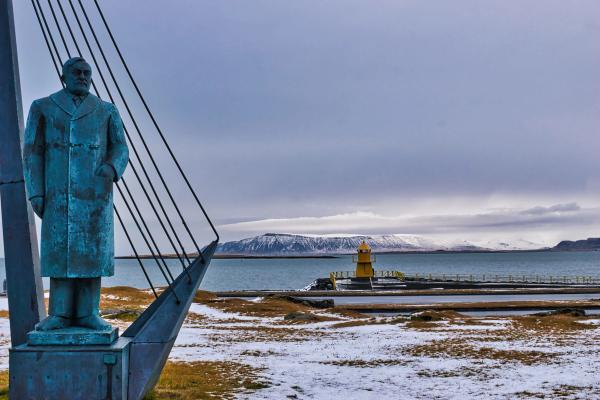
Driving in Iceland in November
Renting a car is the best way to explore and discover Iceland. Driving in Iceland is usually easy and straightforward, but doing it so in November can be challenging due to the changing weather. Snow, ice, and strong winds are common, particularly in rural areas and higher elevations. If you are going to drive, make sure your vehicle has winter tires and follow these tips:
- Check road conditions regularly: Before setting out, always check the latest road conditions on the Icelandic Road and Coastal Administration website. Weather can change rapidly, and certain roads, especially in remote areas, may become impassable.
- Drive slowly and cautiously: Snow and ice can make roads slippery, and visibility can be poor during snowstorms or in the dark. Drive at reduced speeds and be prepared for sudden changes in conditions.
- Consider renting a 4x4 vehicle: A four-wheel-drive vehicle can provide better traction on snow and ice, particularly if you plan to venture off the main roads or into mountainous regions.
- Be Prepared for Delays: Road closures and weather conditions can cause delays, so plan extra time for your journeys and be flexible with your itinerary.
What to Pack for the Weather in November
Packing for a trip to Iceland in November requires careful planning to ensure you stay warm, dry, and comfortable. The key to dressing for Icelandic weather is layering, which allows you to adjust your clothing to the changing conditions.
- Base layers: A thermal t-shirt and underwear to keep you warm.
- Mid-layers: Wool or fleece sweaters are excellent for insulation. They trap heat while allowing moisture to escape.
- Outer layers: A waterproof and windproof jacket is essential for protecting against rain, snow, and cold winds. Waterproof pants are also a good idea for outdoor activities.
- Insulated boots: Choose boots that are both waterproof and insulated, with good traction for walking on icy surfaces.
- Accessories: Don’t forget gloves, hats, and scarves.
- Swimwear: Even in winter, Iceland’s geothermal pools are a must-visit, so bring a swimsuit.
- Sunglasses: The sun reflected on snow or ice can be very harmful to your eyes.
- Daypack: A small, waterproof backpack is handy for carrying essentials during day trips, including extra layers, snacks, and a water bottle.
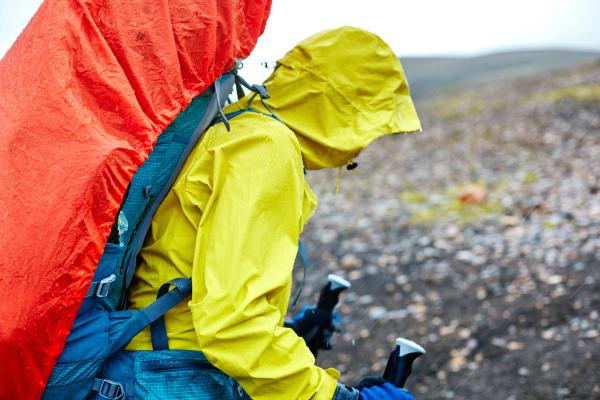
What to do in Iceland in November
Early winter can add a touch of magic to the activities that can be done in Iceland in November. The weather and the reduced daylight hours still provide ample time and conditions for getting a lot done.
Northern Lights
One of the top reasons travelers visit Iceland in November is to witness the Northern Lights. With the long nights and clear skies, your chances of seeing this natural phenomenon are high. To maximize your chances, head to areas with little light pollution, such as the countryside or remote fjords.

Geothermal pools and hot springs
There is no better feeling than taking a relaxing warm bath while the temperature outside is around freezing and everything is covered in snow. There are plenty of places where you can do this, like the Blue Lagoon and the Secret Lagoon in the south, the Mývatn Natural Baths, or the Forest Lagoon in the north.
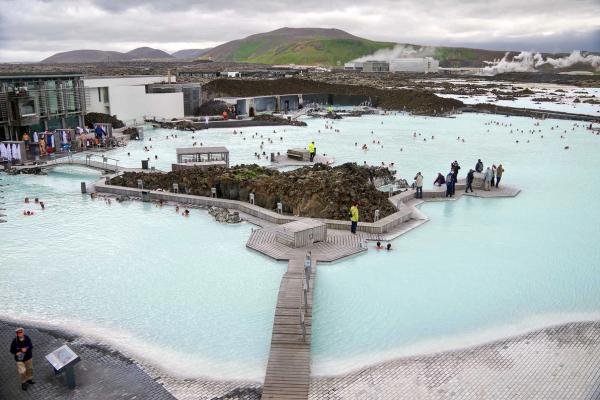
Glacier Tours and Ice Caves
November is an excellent time to explore Iceland’s glaciers, as the colder temperatures make it safer to walk on ice. Guided glacier hikes and ice cave tours are popular activities that allow you to explore these massive ice formations up close. The Vatnajökull glacier, Europe’s largest, is home to some of the most spectacular ice caves, which can be explored with the appropriate guidance.
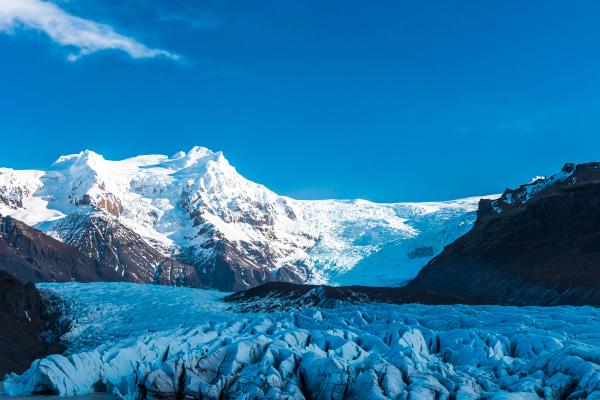
The Golden Circle
One of the most popular tourist routes in Iceland is the Golden Circle. This circular route connects three major natural attractions: Thingvellir National Park, the Geysir geothermal area, and Gullfoss waterfall. November is a great time to visit these sites, as the landscapes begin to take on a wintery appearance, with fewer crowds compared to the summer months.
Snæfellsnes Peninsula
Often referred to as “Iceland in Miniature,” the Snæfellsnes Peninsula offers a bit of everything Iceland has to offer, from black sand beaches and towering cliffs to glaciers and lava fields.
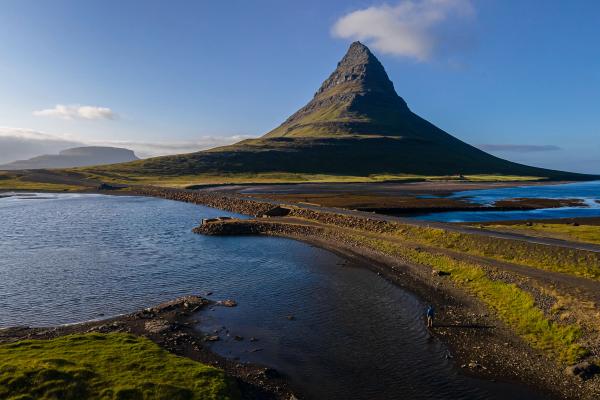
Cultural Events and Festivals in November
November in Iceland is not just about natural monuments and winter scenery. It’s also a time to immerse yourself in the country’s rich cultural scene. Several events and festivals take place during this month.
Iceland Airwaves
Iceland Airwaves is one of the country’s biggest music festivals, held annually in Reykjavik in early November. The festival showcases a wide range of musical genres, featuring both international and local artists. The concerts are held in different places in Reykjavik, creating a vibrant atmosphere throughout the city.
Day of the Icelandic Language
On November 16th, Iceland celebrates the Day of the Icelandic Language, a day dedicated to the preservation and celebration of the native tongue. It’s a unique opportunity to learn about Iceland’s linguistic heritage and its importance to national identity.
Christmas Season Kickoff
By the end of November, Iceland begins to prepare for the Christmas season. In Reykjavik and other towns, Christmas lights are switched on, and festive decorations start to appear. The Christmas markets, which begin in late November, offer a chance to buy local crafts and enjoy traditional Icelandic foods. The Christmas season in Iceland is rich with traditions, including the 13 Yule Lads, Iceland’s mischievous Christmas figures.
Travel Tips
- Book accommodations in advance: November, especially around the time of Iceland Airwaves in Reykjavik, can be busy, so it’s advisable to book your accommodations well in advance to secure the best options.
- Plan your itinerary around daylight hours: With limited daylight, prioritize outdoor activities for the daytime and schedule indoor activities, such as museum visits or enjoying the local cuisine, for the evenings.
- Check the weather forecast and road conditions: Iceland’s weather can be unpredictable, so regularly check the weather forecast and road conditions. The Icelandic Meteorological Office and the Icelandic Road and Coastal Administration are invaluable resources.
- Dress appropriately: The weather in November can range from mild and rainy to cold and snowy. Dressing in layers and wearing appropriate waterproof gear is essential to staying comfortable during your trip.
Conclusion
November in Iceland is a month of contrasts. It’s when winter begins, bringing shorter days, colder temperatures, and frequent rain. On the other hand, there are plenty of good reasons to visit Iceland this month. The chances of seeing the Northern Lights are high, the snow transforms the landscapes into a winter wonderland, and taking a geothermal bath at this time is just amazing.
You only have to bear in mind that the weather changes and it’s unpredictable. But with careful planning and packing, coming to Iceland in November can be one of the best experiences of your life.

